
Water and air are essential to all life on earth. The cleaner they are, the healthier and happier we’ll be. That’s something we can all agree on.
While we may not have as much control over the air quality as we’d like, we can all take part in not contributing more to the pollution that currently exists. This applies to air as well as water. Most of you reading this are probably gardeners.
And as people who grow food, you know that fruits and vegetables don’t grow well without water.
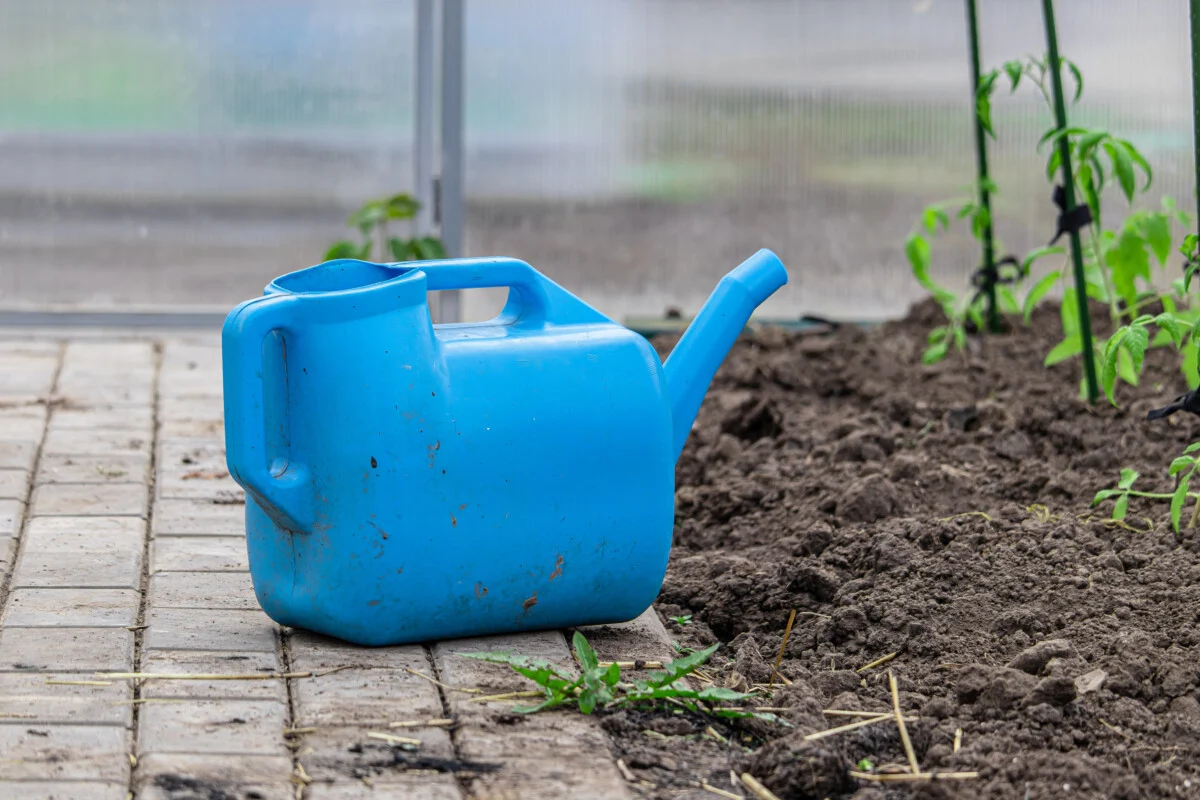
The better the water, the finer your crops will be. But what if there isn’t enough clean water each season to irrigate your crops? It’s a topic that needs addressing when each garden season is different, oftentimes with periods of rain followed by extended weeks of drought.
Once you become conscious of how much water is wasted in your home and garden, you’ll be looking for ways to reduce the flow.
Ways to Reduce Water Usage in the Garden
Conserving and reducing the amount of water you use in the garden is easier than you think.
Apply as many ways from the list below and see how much water you can save compared to using previous gardening methods.
1. Choose Native Plants
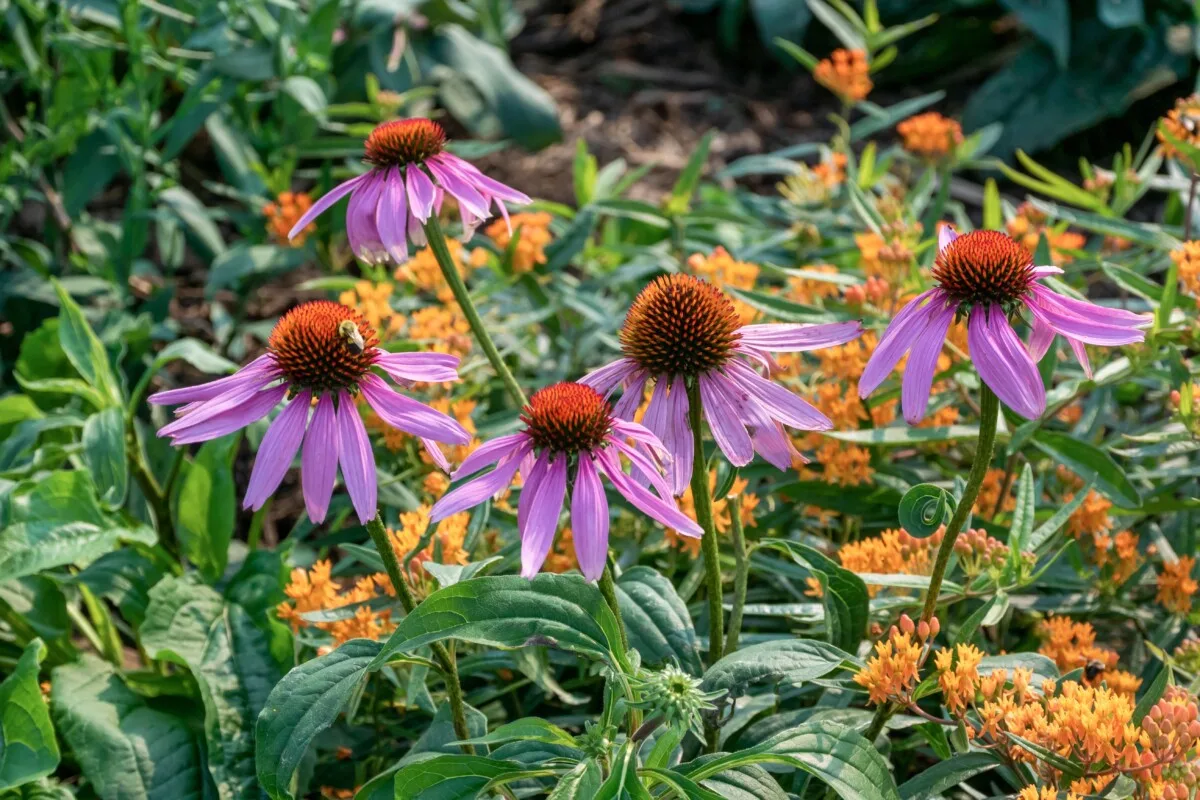
Water conservation and native plants go hand in hand.
Native plants and grasses are naturally low-water use plants. In part because they’ve adapted over time to local soils and climate. Plus, their deep roots reach far into the soil, where they can gather water in times of drought.
Their deep roots also make them a perfect choice for times of extended rain as they help to stabilize the soil.
2. Install a Rain Garden
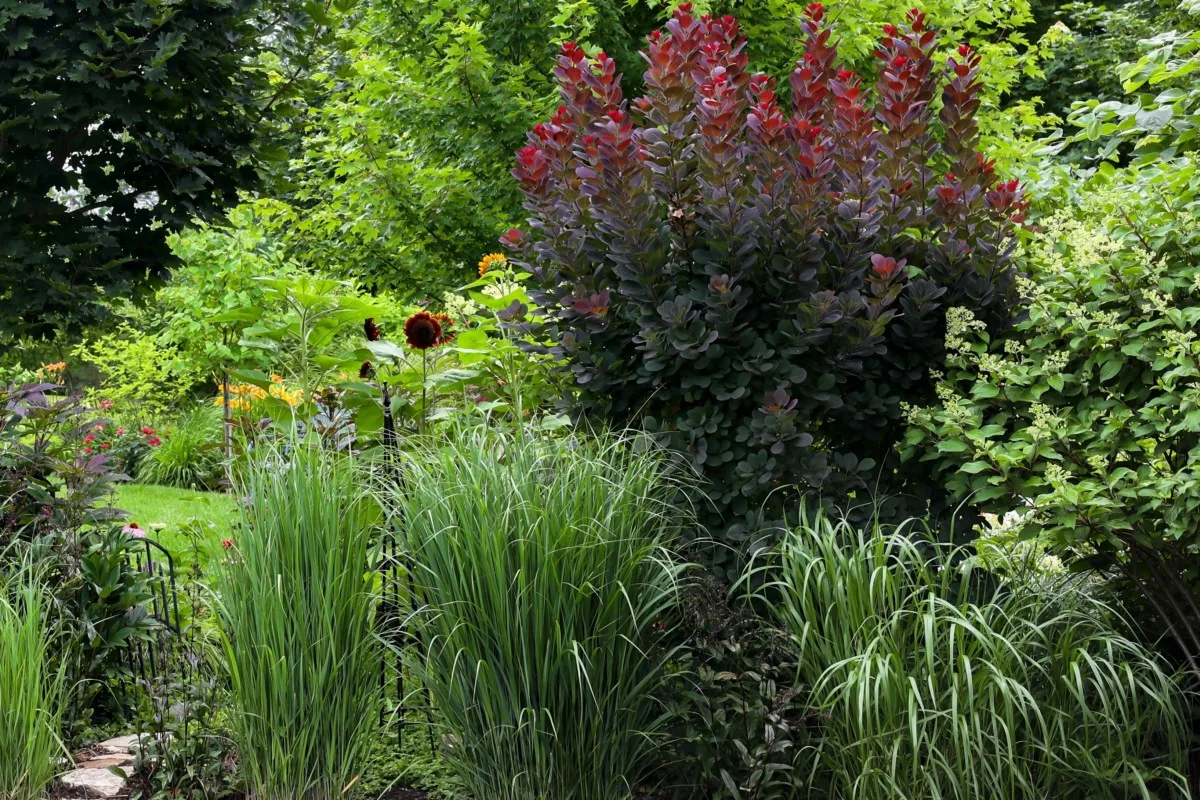
By the name alone, you’d think that a rain garden requires rain to flourish. Actually, it’s quite the opposite: rain gardens are dry most of the time.
They’re designed to be able to handle an influx of rain by the means of creating a basin filled with (mostly native) plants. They also help to protect local waterways from being flooded with runoff from homes, roads and driveways in the event of a storm.
To find out if installing a rain garden would work in your backyard, read this article about starting a rain garden to find out more, plus the 14 best plants to put in it.
3. Stop Digging Your Vegetable Garden
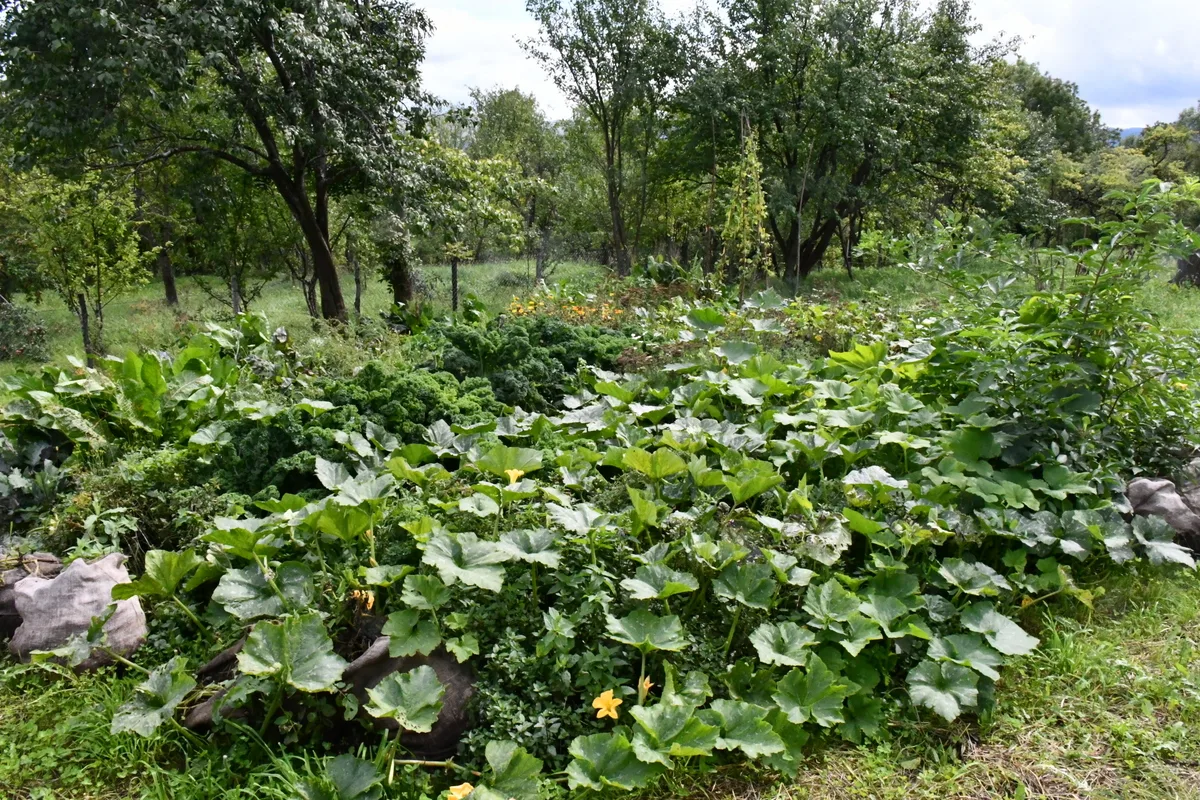
I could go on and on about the benefits of no-dig gardens. Oh, wait, I already have, here and here and here.
If you aren’t familiar with the “less work, more to reap” style of gardening, I can only suggest you try it out for a few seasons. One is not enough for the land, or you, to convert to this modern way of gardening. It goes against so many things we’ve been taught about growing food, but it works.
You might ask, how often do you water your no-dig garden?
It varies from season to season. Most years, not at all, or only at the time of planting.
Last summer was different in that it didn’t rain for more than 2 months. Most crops did extremely well with spot watering by hand once a week. Kale was definitely ruler of the garden.
When you stop digging your garden, the soil will retain a lot of moisture. Don’t take my word for it; try it yourself.
Did you know you can apply no-dig gardening practices in your raised beds to reduce water usage too?
4. Mulch, Mulch, Mulch To Reduce Water Usage in the Garden
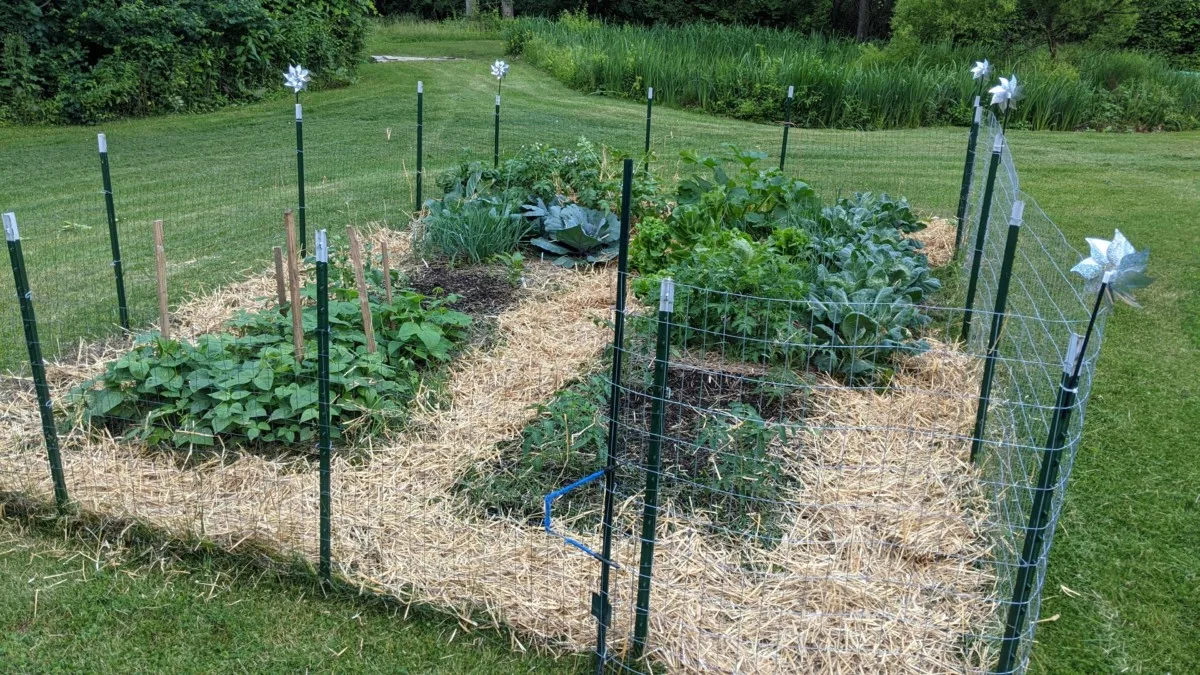
As above, so below. Now that we’ve mentioned not digging your soil, one of the first things you need to know is that it entails mulching with lots of beautiful mulch.
Mulching not only keeps the weeds at bay, but it also keeps moisture in the soil. Which means you don’t need to water nearly as much.
Even if you’ve tilled your garden, you can still employ the use of mulch around any plant. Tomatoes and squashes, in particular, are fond of a little undercover. A little mulch goes a long way in preventing the soil from heating up and drying out even more.
5. Plant Drought Tolerant Cultivars
Some vegetables are more tolerant of low water conditions and so can skip a watering session or two without harm. They may have deeper roots or specialized leaves to stop water loss.
Lindsay rounds up 75 popular vegetable cultivars to consider for a drought resistant garden.
6. Water at the Right Time of Day
When you are hot and ready for a refreshing summer switchel, the plants are ready for a sip of fresh water too. Right or wrong?
What’s wrong with watering in the afternoon is that the water you give the garden will tend to evaporate rather than getting absorbed into the soil and roots. And that’s a definite waste of good water
The best time of day to water is early morning. Though evening watering has its merits too.
Morning watering prepares the plants with immediate water for the sunny day ahead, whereas evening watering can help cool the soil more effectively. However, you need to be careful with watering in the evening, as water falls on the leaves and close to the roots, which may encourage fungal growth, rot or insect damage.
Read Tracey’s article about Why Is My Garden Dying? if you are unsure of how much water is too much – or too little.
7. Use Drip Irrigation Instead of a Sprinkler
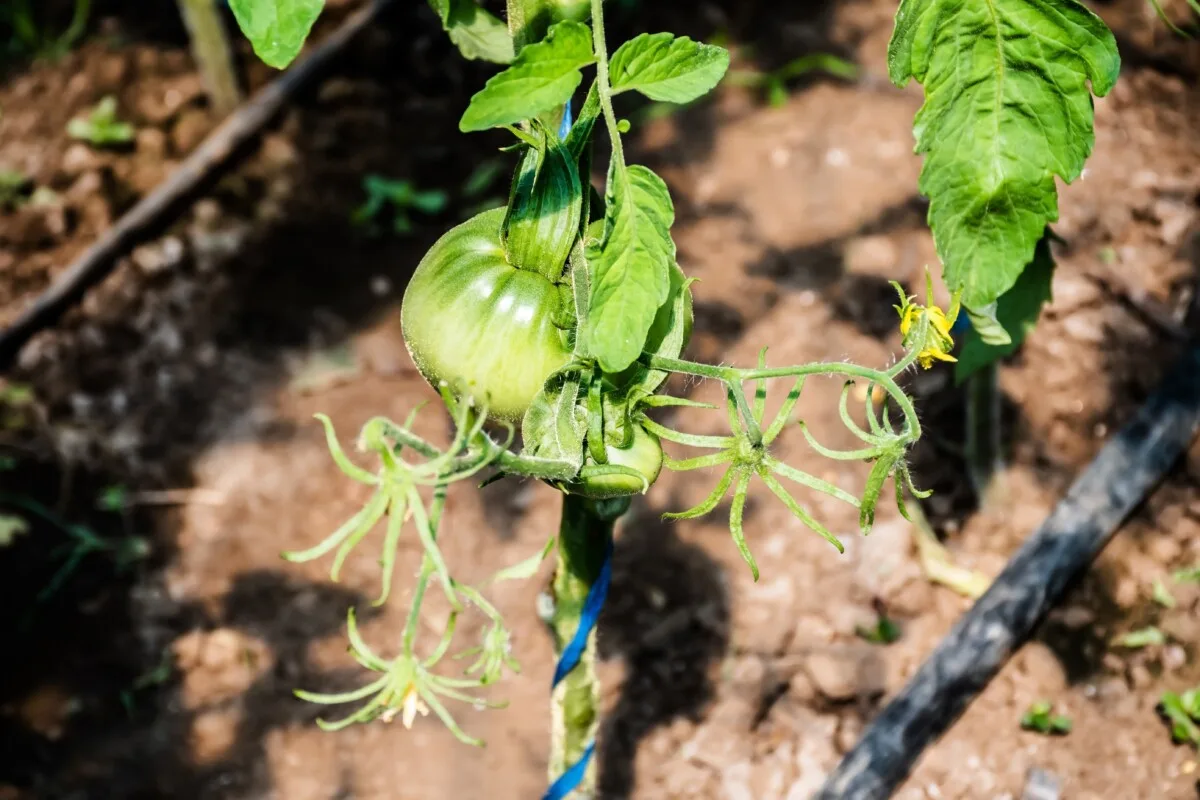
Sprinklers are fun to run through when the summer sun is scorching down, but are they efficient at watering your garden? Not so much. It sometimes happens that the water goes every which way while the wind blows it past your crops. Let’s not even get started on water wasted to evaporation.
Then you need to make up for the insufficient work by hand watering the missed areas. Maybe you should have just started with that in the first place, especially if you have a small garden.
Larger gardens, however, may need a little more work. In a really dry summer, once you’ve put your mulch down, you may still need to irrigate.
Why not use a drip irrigation system instead to reduce water usage?
Most drip irrigation systems are up to 90% efficient at allowing plants to use the water that is applied at the soil level. This, in turn, prevents the leaves and stems from getting wet, which may lead to fungal and bacterial diseases. On the other hand, sprinkler systems range in efficiency from 60-75%. Save a little water here, a little more there, and you are on your way to saving a lot.
8. Reduce Fertilizer Use
To say it plain and simple, fertilizer stimulates the growth of plants. This, in turn, leaves your plants longing for more water – it’s a vicious cycle.
While the addition of fertilizer will result in larger fruits and vegetables, i.e. more to eat, you’ll inevitably lose out on nutrient density, which has been on the decline for several generations now.
That’s not to say don’t apply any fertilizer at all. There are big differences between chemical fertilizers and organic fertilizers.
The decision to grow all organic is a personal one, though with a patch of stinging nettle nearby as a source of “green manure”, you’ll ease into it with no difficulty at all.
Without a bunch of chemical fertilizers to use on your garden crops, the food you grow in your backyard will be far healthier than anything you can buy from the store. Enjoy every bite as you save water for more important things.
9. Collect Rainwater
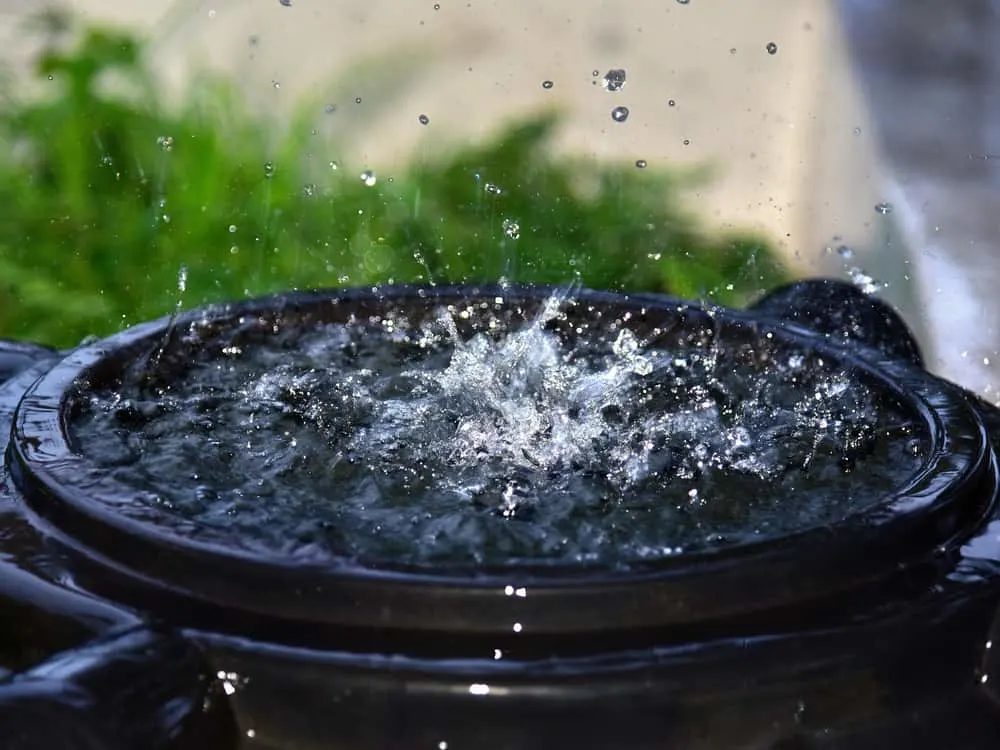
Oftentimes, in order to make a reduction, it is wise to save a surplus. In the case of gardening, water is always in need, but you often need it more when you don’t have it.
If you’re routinely running into dry gardening conditions, it may be time to start thinking about a rainwater collection system.
When you find that your water bill is getting too high, all you need to do is grab a watering can and dip it into your barrel to water your herbs. In areas where you can collect rainwater, it makes absolute sense to do so. And when you come to realize that 33% to 50% of domestic water use is applied to lawns and gardens each year, you may feel the desire to prevent that good water from being wasted.
Collect it from the sky and use it sparingly. Somehow, this simple act of self-sufficiency feels quite good.
10. Turn Your Lawn into a Meadow
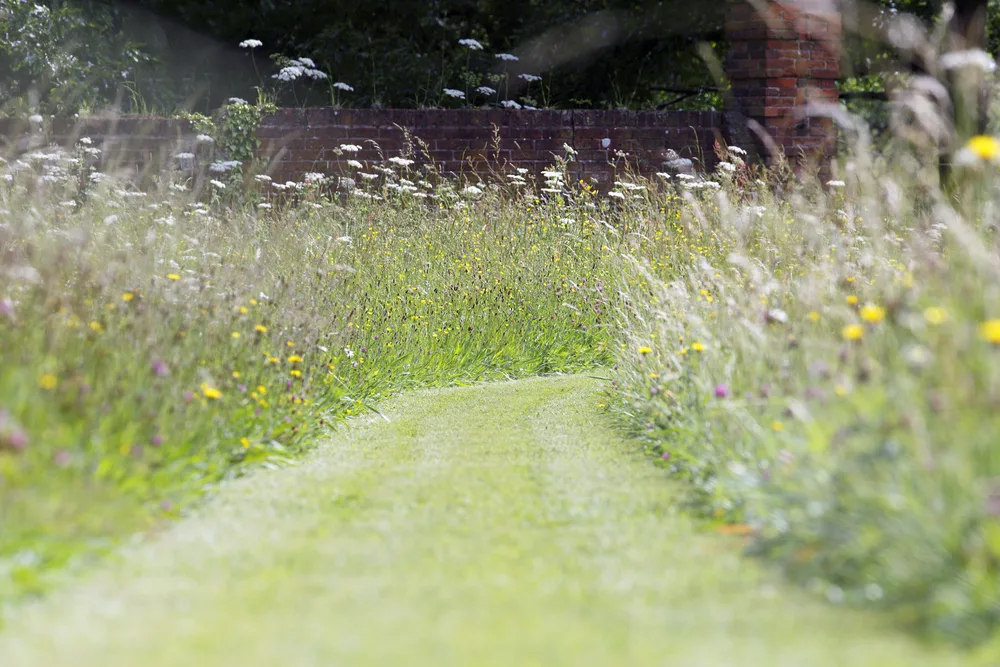
At some point in your life, green-lawn envy may turn into the exact opposite.
Perhaps you want to save the bees or rewild your garden. Maybe you just want to let nature move in and enjoy your backyard as much as you do.
In the case of reducing your water usage, converting existing lawn into a wildflower meadow is an excellent choice. There will be no need for fertilizing, no need for irrigation either. As native plants move in, you’ll have less and less work to do too.
If you aren’t quite ready to dedicate a patch of lawn to wildflowers, you can always choose to mow less often – in favor of the birds and bees. At the very least, to participate in No-Mow May.
It’s been said that allowing your grass to grow 3″ in height will help reduce water usage by decreasing the amount of evaporation. Besides, the pollinators will love it when the flowers are popping up left and right. If you need a path to the garden, simply mow one pass, just enough for a wheelbarrow to get by.
11. Water-Conscious Container Gardening
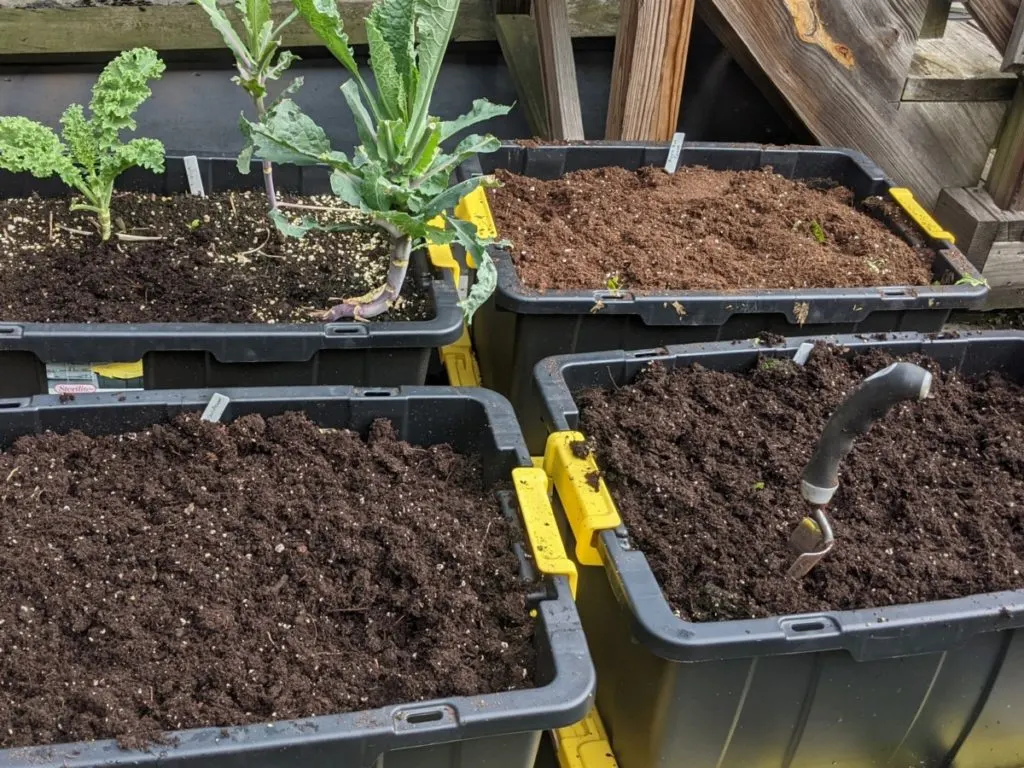
Container gardening is a wonderful way to grow food if you have a porch or deck, but no access to a patch of soil.
It works just about anywhere, and it’s super easy to get started. You can use plastic pots, ceramic pots, glazed pots, 5-gallon buckets, or whatever container you have on hand.
But, different materials soak up the heat and dry out faster than others. Metal, for instance, heats up quickly, so you’ll be watering those containers more often in a sunny location. In a hot climate, you may want to refrain from using them.
Unglazed terracotta pots lose moisture faster than glazed ones; generally, it’s a good idea to choose the latter. However, a pot-in-pot solution can always be used to keep the decorative pot on the outside and a more water-efficient one on the inside.
When all is said and planted, a good potting soil is always key to keeping your plants roots nice and moist.
Related reading: 8 Things You Need to Know Before Using Terracotta Pots
How to Reduce Water Usage in your Home
I’m not sure everyone checks how much water they actually consume (use) in their home and garden each month. We certainly don’t, as our home doesn’t have a water meter.
Though we do have a rough idea of how much we use in a day, simply because we don’t have running water in our home (no indoor plumbing comes with its perks, especially in winter) – it comes from a faucet outside. We bring the water inside, bucket- by bucketful.
On average, we use about 36 liters of water a day (more on laundry days). That’s less than 10 gallons for a family of three, not including drinking water. We also have a compost toilet, so little water is used there. I’m not saying, by any means, that everyone should live this way, only if you choose to.
Considering that the average person uses 100 gallons of water a day, well, there are places where each and every one of us could probably cut down on our water usage.
Let’s look at a few of them.
12. Collect Greywater
If you are unsure about what greywater is, a great place to start reading about it is here.
In essence, greywater or gray water is water that’s already been used from your sinks, shower, tub, washing machine, etc. It’s already come into contact with soaps, detergents, grease and food. Water from the toilet is considered black water, that which contains feces. The first one can be used in the garden; the second is better off going into a septic or sanitary sewer system.
While greywater can be collected for use in the garden and particularly in orchard or landscape use, it is subject to some restrictions across the states.
To make the collection and use of greywater in your garden a successful one, two things come to mind:
- the use of high-quality biodegradable soaps and cleaners is a must (remember what goes in, must come out)
- and treatment of the greywater is essential (this can be accomplished through the means of biological systems such as sand filters and wetland techniques or direct-use systems).
It may seem complicated at first, but if the pipe fits, wear it.
13. Flushing Fixes
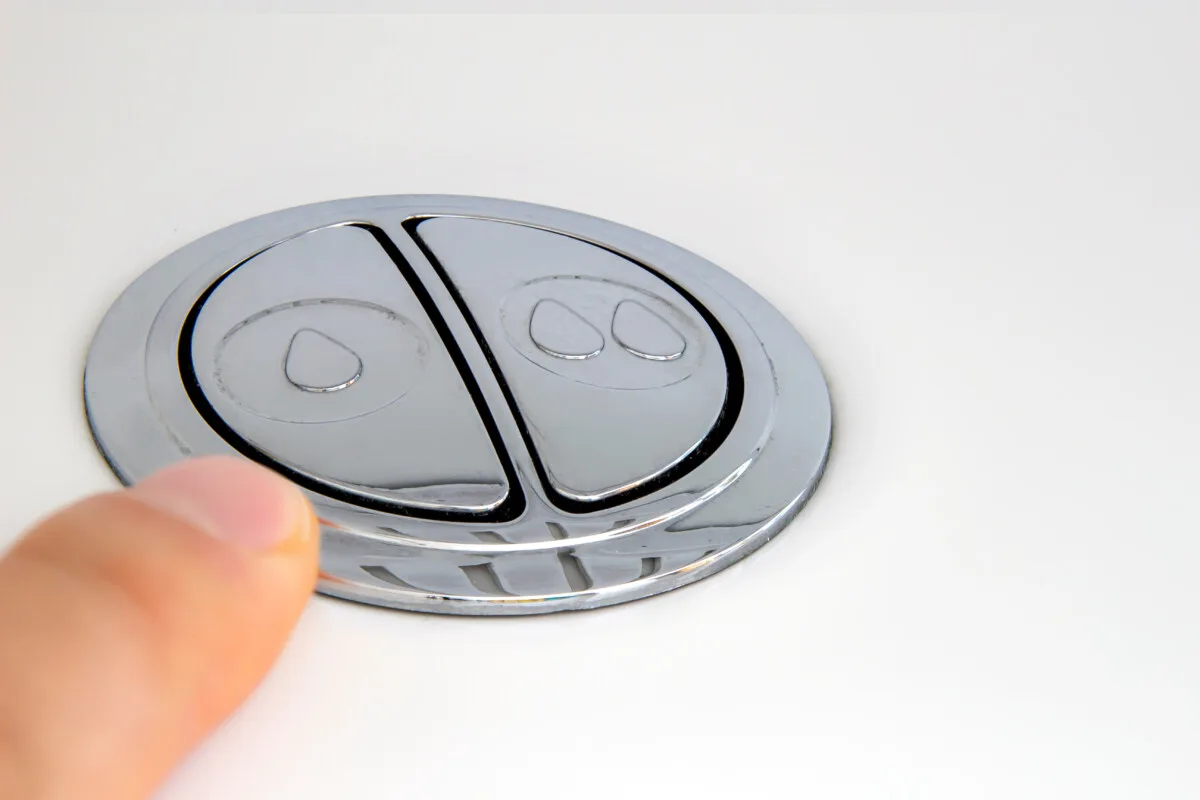
The simple act of flushing the toilet comes with, you guessed it: water usage, a lot of it.
Low-flush toilets use about 1.6 gallons per flush, whereas standard toilets use up to 4 gallons or more. One flush consumes more than you drink in an entire day.
So what can you do about reducing water instead of switching to a compost toilet?
If your toilet is outdated, make the switch to a low-flow toilet. That’s going to cost you, however, both in material and labor.
An easier way to use less on every flush is to put a rock-filled plastic container in the tank. This tutorial about converting any toilet to a low-flush one explains everything.
If this all seems like too much work, move on to the next idea. It’s easier, I promise.
14. Install Efficient Showerheads
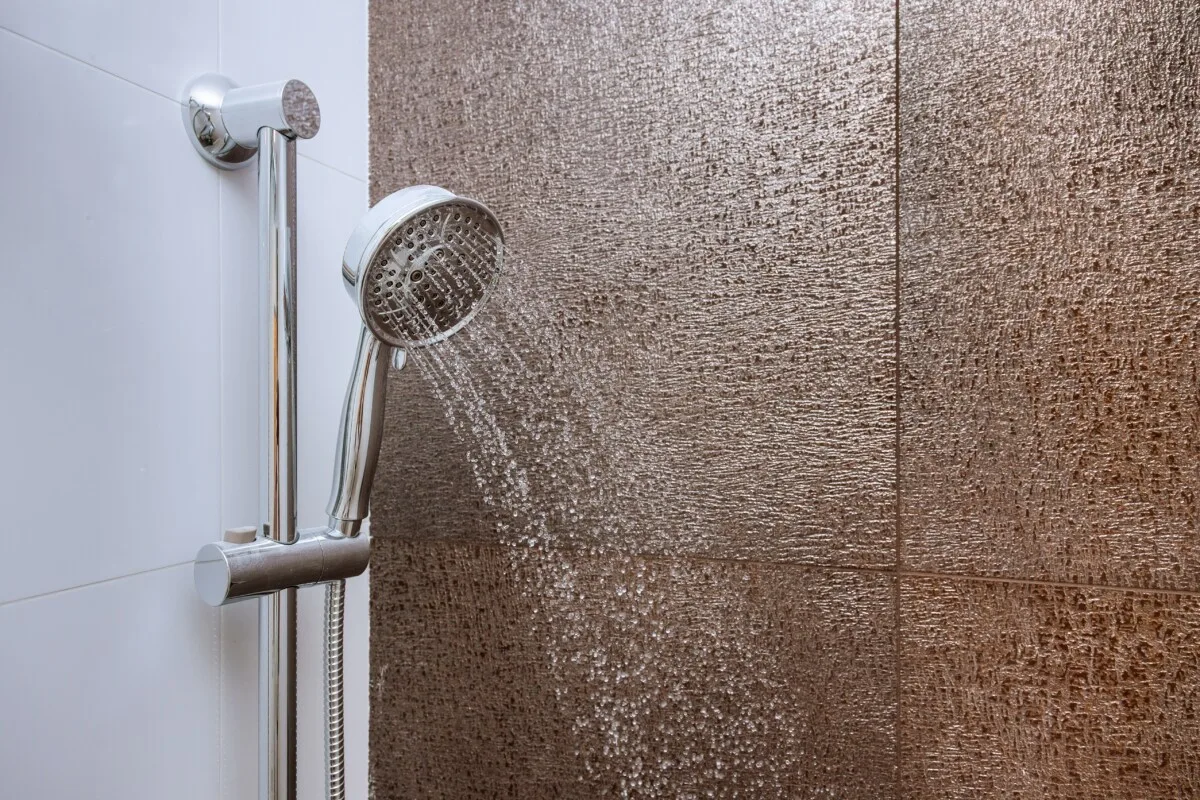
Every once in a while, a new showerhead is a good thing to have.
There’s a debate on whether baths or showers are better for you, how often you should take them and at what temperature. Again, that’s a personal decision.
Some people say that baths use more water than showers, but again, that all depends on who is taking the shower. If you are one to stand under a long, hot shower, you may just outdo the bath water consumption after all.
A flow regulator or a water-efficient showerhead can cut down your water usage by thirty percent without taking away the pleasure of standing under a warm waterfall.
15. Wash Dishes and Clothes in a Way That Reduces Water Usage
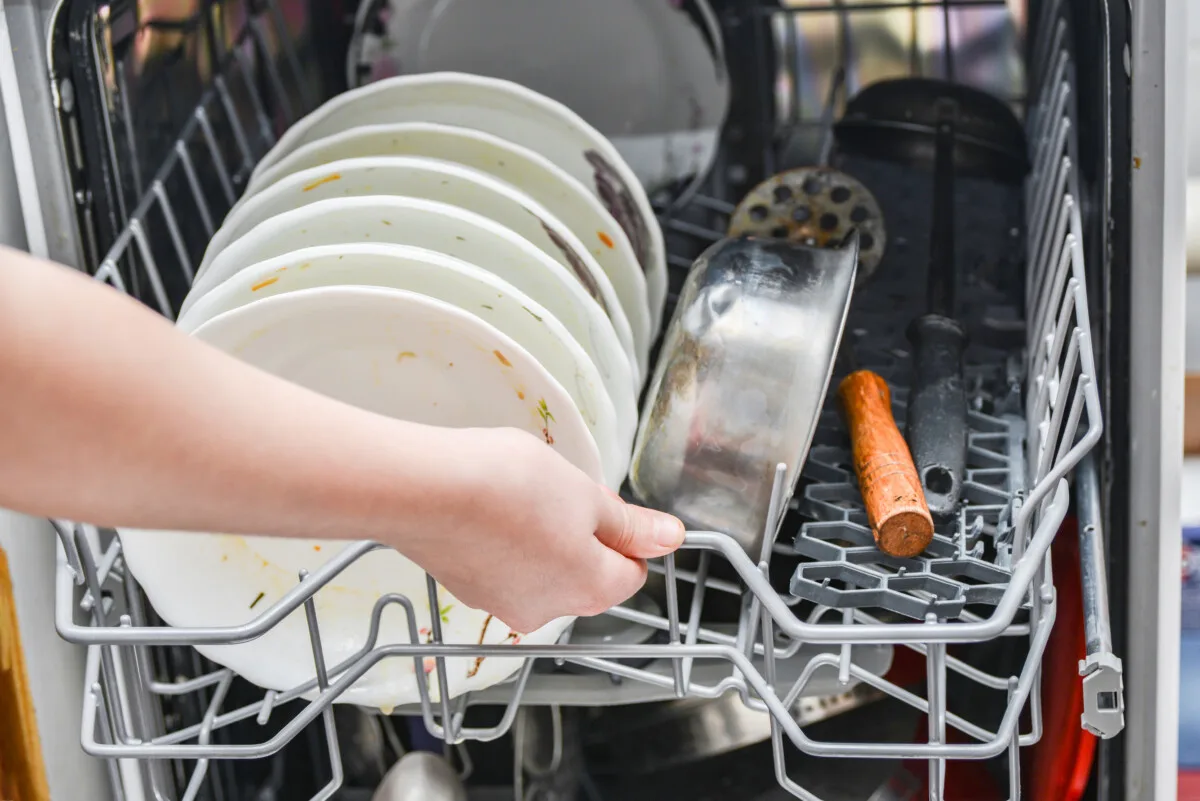
Most machines are operate efficiently only when full. If you don’t have enough dishes to fill a dishwasher, consider washing them by hand. Even if it uses a little more water, you won’t be using electricity.
Like with dishes, if the washer isn’t full of clothes, it’s still going to fill up with water. There are good and better settings, depending on your make and model, but washing by hand can be just as effective, and may I mention it again: electricity-free. Free as in freedom from the grid. You can do laundry any time of day without making a sound.
Don’t forget “hard on the hands” can also contribute to stronger muscles. If you approach clothes washing from a different standpoint, it’s like free exercise to complement the bending over in the garden.
While you are at it, don’t forget to line-dry your clothes. Outside is best, yet there are inside devices and contraptions that make life easier without the use of a clothes dryer.
16. Check Plumbing for Leaks
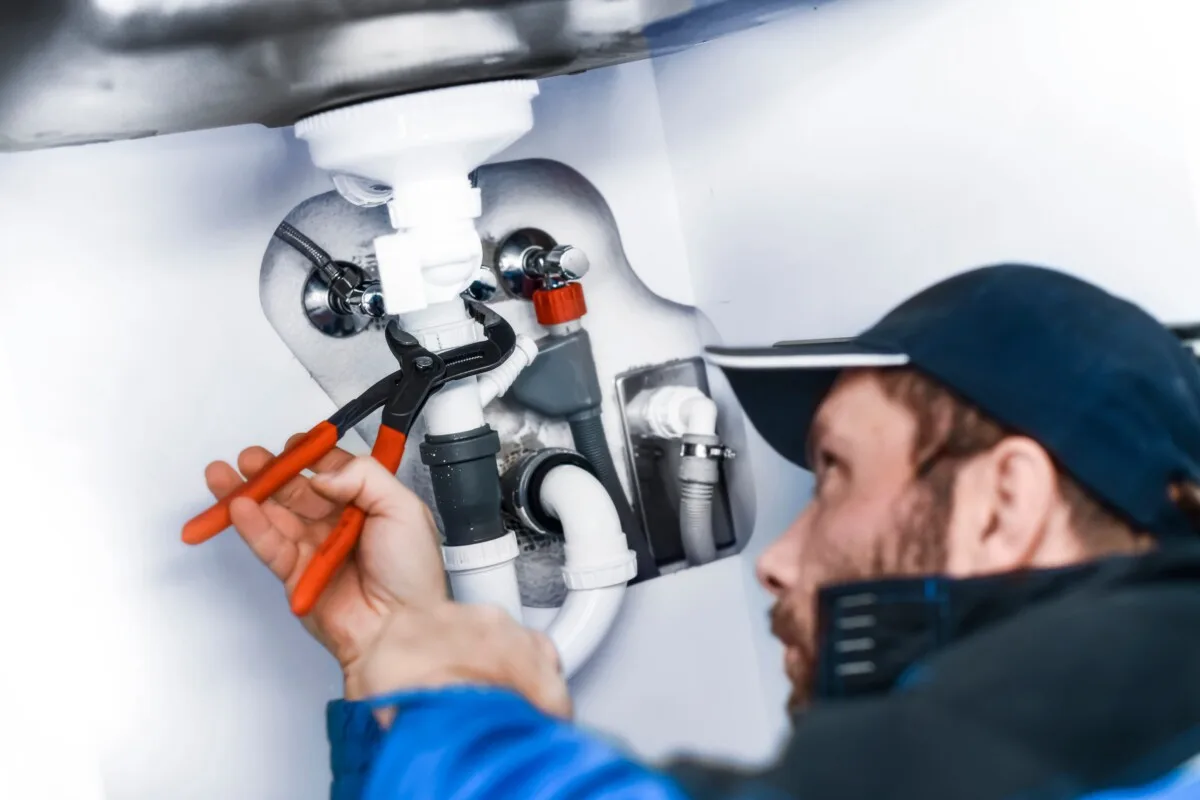
Dripping water is still water down the drain. A simple one drip per second wastes more than 3,000 gallons a year.
You’ll want to check all of your inside and outside taps from time to time to prevent this.
You can check out all the gaskets and washers by yourself or hire someone to do it. Plumbers aren’t for emergencies only. It’s not only the sink that can leak; toilets, dishwashers, washing machines, air conditioners, and even the fridge can drip on occasion. Never overload a machine because you are short on time or clothes to wear.
Use all appliances responsibly.
17. Don’t Leave the Water Running
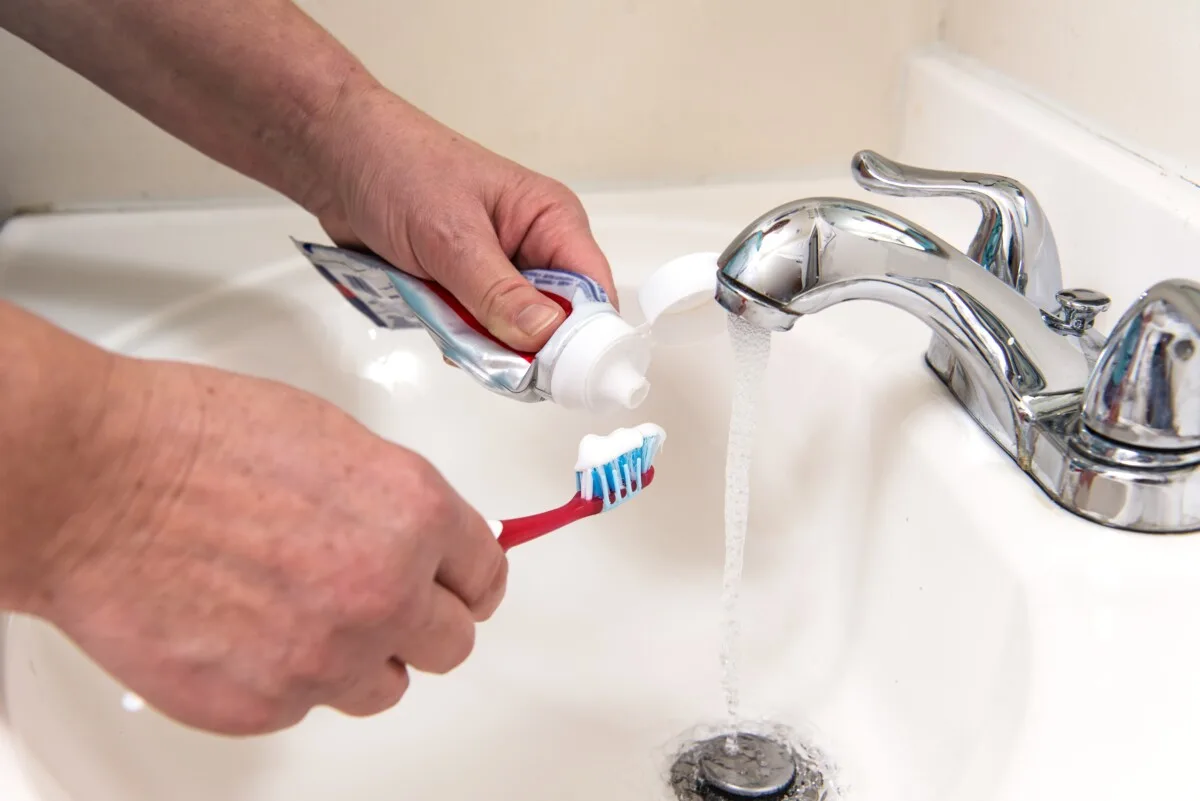
I know it sounds like common sense, but not letting the water run while you brush your teeth or shave is repeated so much that I think it may be going in one ear and out the other.
If you are concerned about water wastage, this one is a no-brainer.
18. Wash your Car With a Bucket and Sponge
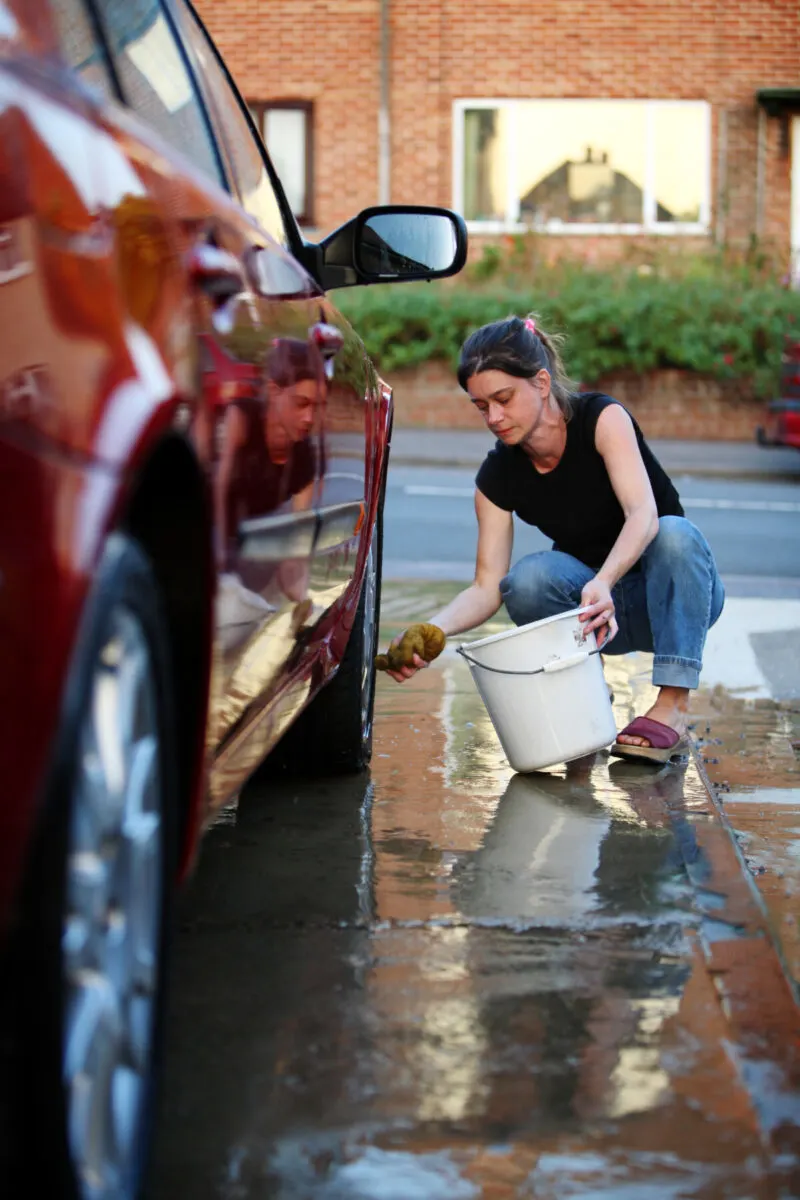
Can you wash your car with one bucket of water or two? YouTube seems to think so.
It depends on how dirty your car is in the first place, though it is possible. One bucket of soapy water, the other for rinsing. All you need is some arm muscle and rags.
On the contrary, a typical car wash uses 20-40 gallons.
19. Compost Food Waste Instead of Using the Garbage Disposal
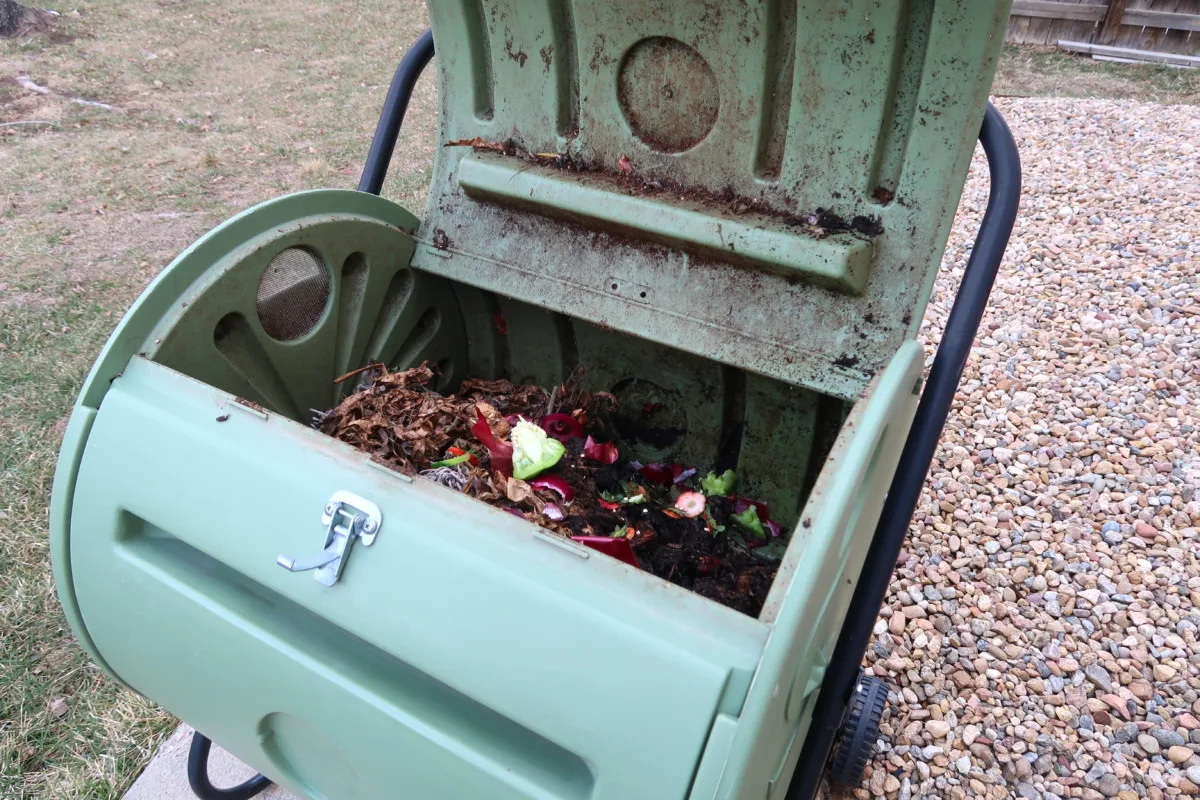
Here’s where it comes full circle; by starting in the kitchen you will find ways to conserve water in the garden.
Take this into account: a single run of the garbage disposal uses 2-5 gallons of water. Already you’ve lost food scraps and potable water in one go.
So, let’s save on water by composting instead. You can do this with a small Bokashi system, or you can go with a larger outdoor setup.
It takes some time for the composting part to happen, but when it does, you’ll have nutritious, water-retaining compost to use in the garden as both a mulch and natural fertilizer. It’s a well-balanced situation to be in. Saving water here, saving water there.
Reducing food waste is also a good start for reducing water usage overall. You can regrow veggies from scraps and learn how to store food properly to prevent spoilage.
What other ways can you think to reduce water usage in your home and garden?

Get the famous Rural Sprout newsletter delivered to your inbox.
Including Sunday ramblings from our editor, Tracey, as well as “What’s Up Wednesday” our roundup of what’s in season and new article updates and alerts.

